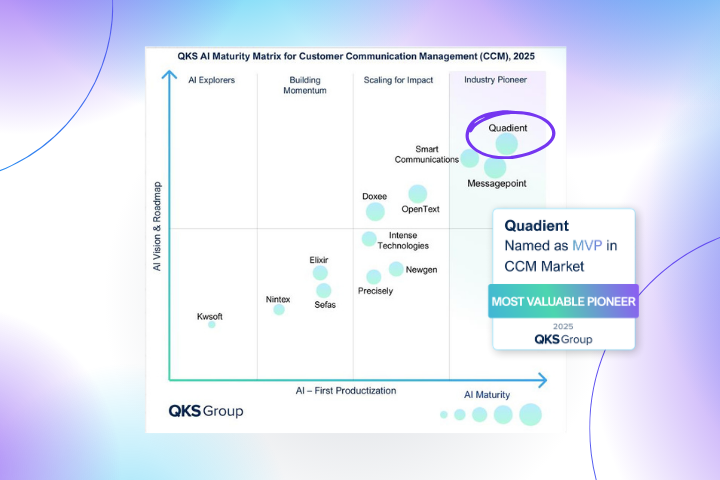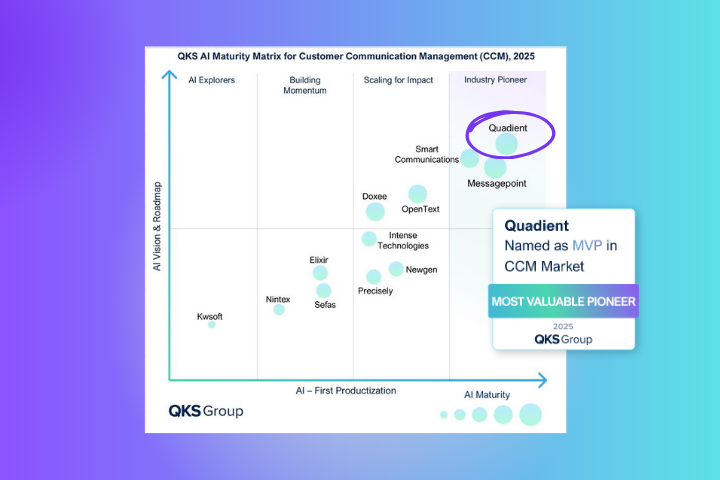
Insurance providers are responsible for communicating with millions of policyholders while navigating a maze of regulations that vary by state, product line, and delivery method. These regulatory requirements aren’t just numerous, they’re dynamic, often shifting in response to new laws, policy updates, or compliance mandates. Managing these variables manually or with fragmented systems introduces significant risk and operational inefficiencies.
A centralized Customer Communications Management (CCM) platform offers insurers the structure and tools to manage this complexity at scale. By automating and standardizing regulatory language across all jurisdictions and business lines, CCM platforms enable insurers to meet compliance requirements more efficiently, consistently, and transparently.
The compliance challenge in insurance
As previously noted, regulatory obligations for insurance carriers vary dramatically. One state may require a specific disclosure in life insurance policies, while another mandates unique phrasing for auto claim denials. Additionally, these requirements can differ depending on whether a communication is delivered via print, email, web portal, or short message service (SMS).
Many insurance organizations manage these requirements using disjointed tools—separate systems for each line of business or communication channel. In such an environment, ensuring that every communication reflects the correct regulatory language becomes a monumental challenge. While the risk of inconsistency grows with each new product, jurisdiction, or delivery method.
The risks of a fragmented approach
When compliance is managed through disconnected systems or manual processes, the likelihood of outdated, missing, or incorrect language increases. This undoubtedly results in delayed responses, regulatory fines, reputational damage, and added operational burden. Even minor errors in policy documents or claims communications can draw scrutiny from regulators or lead to customer disputes.
Without a centralized view of communications and content changes, insurers may also struggle to produce audit trails or prove compliance when required. The inability to trace who changed what and when it happened makes regulatory reviews more stressful and resource-intensive than they need to be.
CCM platforms addressing compliance needs
A centralized CCM platform solves these challenges by enabling insurers to manage all customer-facing communications—from policy documents to billing statements—from a single, governed environment with capabilities like:
Template and content management
All approved content and regulatory language is stored and maintained centrally. This ensures every message uses consistent, up-to-date language, regardless of where or how it is sent.
2. Automated rules and logic
CCM platforms use business rules to apply the right disclosures and language based on factors like product type, customer location, and communication channel. This automation reduces human error and accelerates the approval process.
3. Omnichannel consistency
Communications are aligned across print, digital, and mobile channels. Policyholders receive a consistent experience, and compliance is ensured regardless of format.
4. Auditability and change tracking
Platforms maintain detailed records of content changes, approvals, and distribution. When auditors or regulators request documentation, insurers can quickly provide it and demonstrate compliance.
5. Speed and agility
Centralized platforms allow insurers to implement regulatory changes across all templates and channels in a matter of hours or days—rather than weeks—without relying heavily on IT support.
Real-World Applications
With a centralized CCM solution in place, insurers can automatically insert jurisdiction-specific disclosures into outgoing policy documents, ensuring each communication is compliant before it leaves the system. When regulatory updates are announced, changes can be made once and cascaded across all relevant templates and delivery channels in real time.
This approach not only reduces the risk of noncompliance, but lowers operational costs and speeds up communication delivery. Teams spend less time chasing approvals, reworking documents, or navigating version control issues—and more time focused on customer engagement and strategic initiatives.
Compliance without compromise
Maintaining regulatory compliance across multiple jurisdictions and lines of business is a challenge that will only grow in complexity. Insurers that continue to rely on manual processes or siloed tools put themselves at risk of errors, inefficiencies, and missed opportunities.
A centralized CCM platform offers a smarter path forward, one that enables insurers to meet regulatory requirements with confidence, accuracy, and speed. For those ready to modernize their approach, Quadient’s CCM platform, Inspire Evolve, delivers the scale, automation, and oversight needed to stay compliant while improving communication quality and operational performance.







